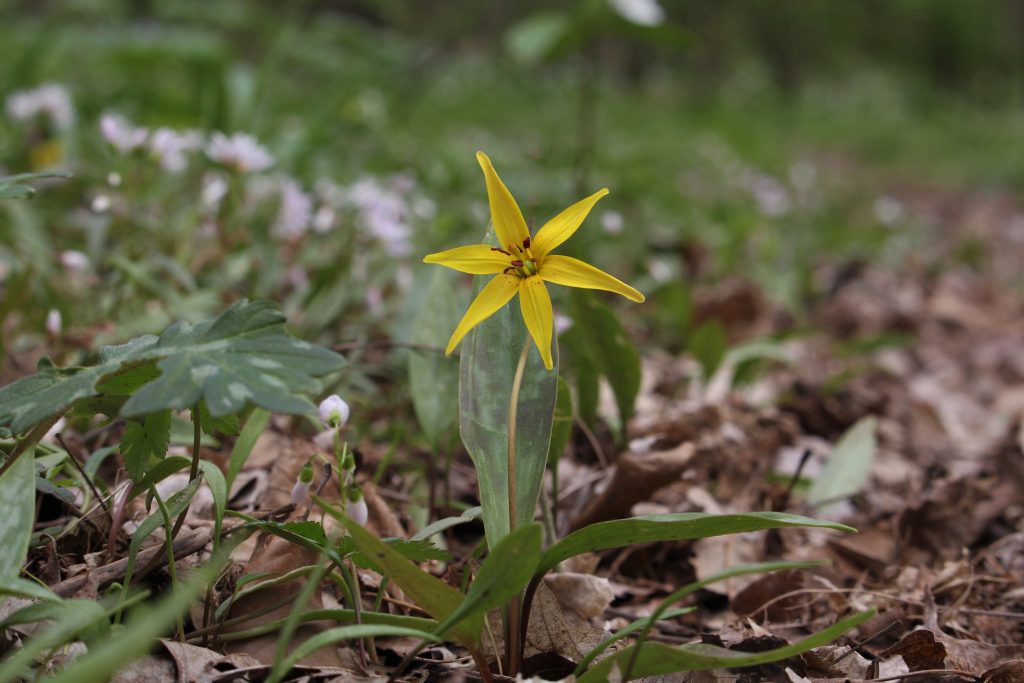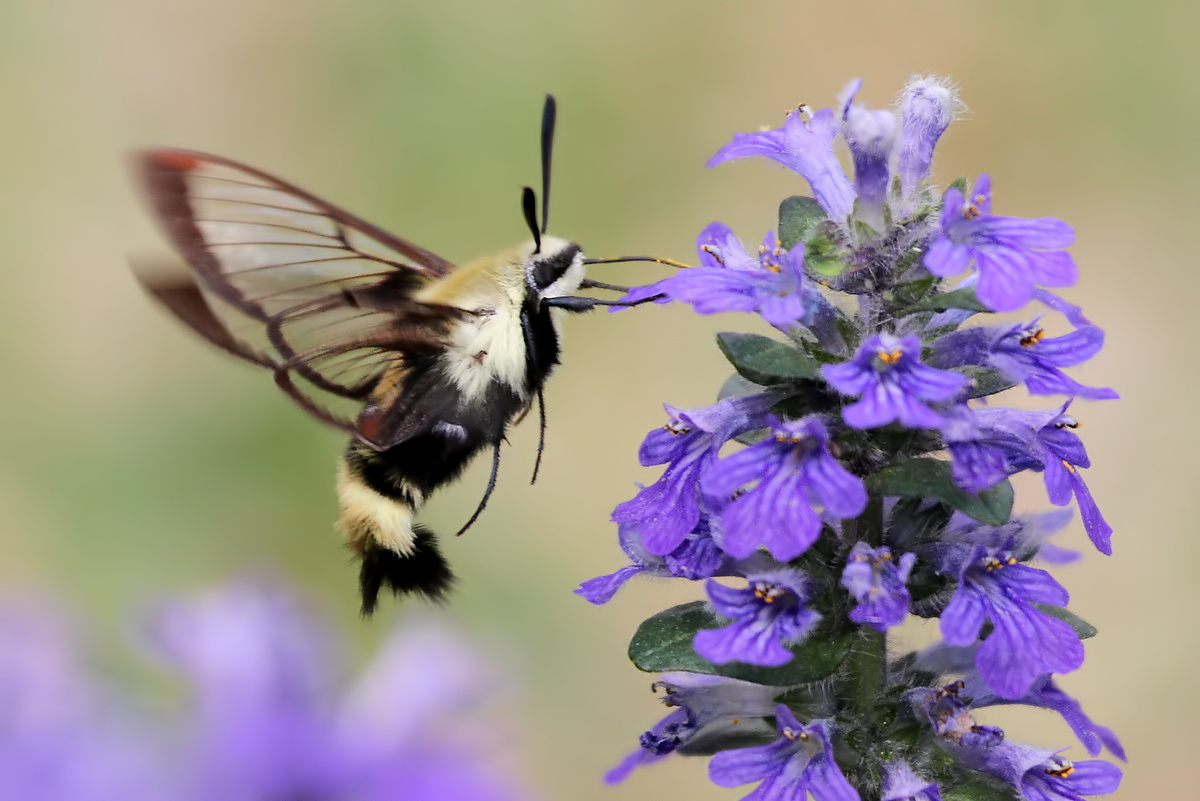A brilliant rainbow is a dazzling sight to behold. When translating that spectacular sky bridge onto paper, we use the acronym “ROYGBIV” to attempt a definition of the magical hues (Red, Orange, Yellow, Green, Blue, Indigo, Violet).
Over April, May, and June we can see a veritable rainbow on the ground too in the wildflowers found on the forest floor.
Red – Red Trillium
Red Trillium (Trillium erectum L.) has a single whorl of diamond-shaped leaves and stands about a foot tall. Its single flower is made of three scarlet colored petals that curve slightly backwards. The blooms last for about three weeks before giving way to berry-like fruits that are eaten by birds and woodland mammals like rabbits and raccoons.
Orange – Wild Columbine
Wild Red Columbine (Aquilegia canadensis) is a showy flower with a mix of yellow, orange, and red colors. The bell-shaped flower faces downwards, as if nodding. It has distinct backwards-facing tubes that contain nectar which long-tongued wildlife, life butterflies, can reach. The scientific name “Aquilegia” is based on the Latin word for “eagle” because the spurred petals resemble an eagle’s talon.
Yellow – Trout Lily
Yellow Trout-Lily (Erythronium americanum) has a nodding flower, like columbine. Its single flower has bright yellow petals which curve backwards. This exposes six prominent brown stamens that point downwards. Trout-lilies can take up to seven years to bloom when grown from seed. Each year a single leaf emerges to capture sunlight and create food that will eventually help the flower bloom.
Green – Jack-in-the-pulpit
Jack-in-the-pulpit (Arisaema triphyllum) has an intriguing blossom, a pitcher-shaped cylindrical green flower that is striped with maroon and brown. The petal curls over the top, creating a hood. Jack-in-the-pulpit can either be male or female, but change from year to year based on the pollination success of the previous year. Male plants have a small hole at the bottom which allows pollinators to escape out of the bottom. Female plants do not have the hole, instead making pollinators work harder to get out, which rubs more pollen on their bodiest.
Blue – Virginia Bluebell
Virginia bluebells (Mertensia virginica) have a gorgeous cluster of light blue trumpet-shaped flowers. The arching, pendulous clusters are a show-stopper of spring wildflowers. Virginia Bluebells need moist soils and often grow in large colonies in wet forests. This fragrant flower attracts many pollinators including bees, butterflies, moths, flies, and hummingbirds.
Indigo – Woodland Phlox
Blue Woodland Plox (Phlox divaricata) has loose clusters of flat small flowers. Five notched lavender petals are evenly spaced with little to no overlap. They grow 8-18 inches in shady patches of moist forests. The stem is somewhat sticky, creating creeping shoots at the base.
Violet – Common Violet
Common Blue Violet (Viola sororia sororia) is a short-stemmed plant with sometimes hairy leaves. Flat, oval petals range from lavender to deep purple. The wide petals work as a landing pad for insects, favored by mason bees and mining bees. The plants serve as food for turkeys, rabbits, deer, mice, and quail. The Common Violet produces seeds in late summer in a self-fertilization process. It results in seeds being launched from the plant as far as 9ft away.
These wildflowers are few of the myriad species which bring a riot of hues, heights, textures, and shapes to the forest floor. There are other colors too. Geraniums bring a pop of pink and nodding trillium glows soft white. These beauties are most often ephemeral, only lasting a few weeks to a few months before fading.
Kelley V. Phillips is the Communications & Outreach Manager for Red-tail Land Conservancy. She strives to cultivate wonder in nature and action to protect it.




